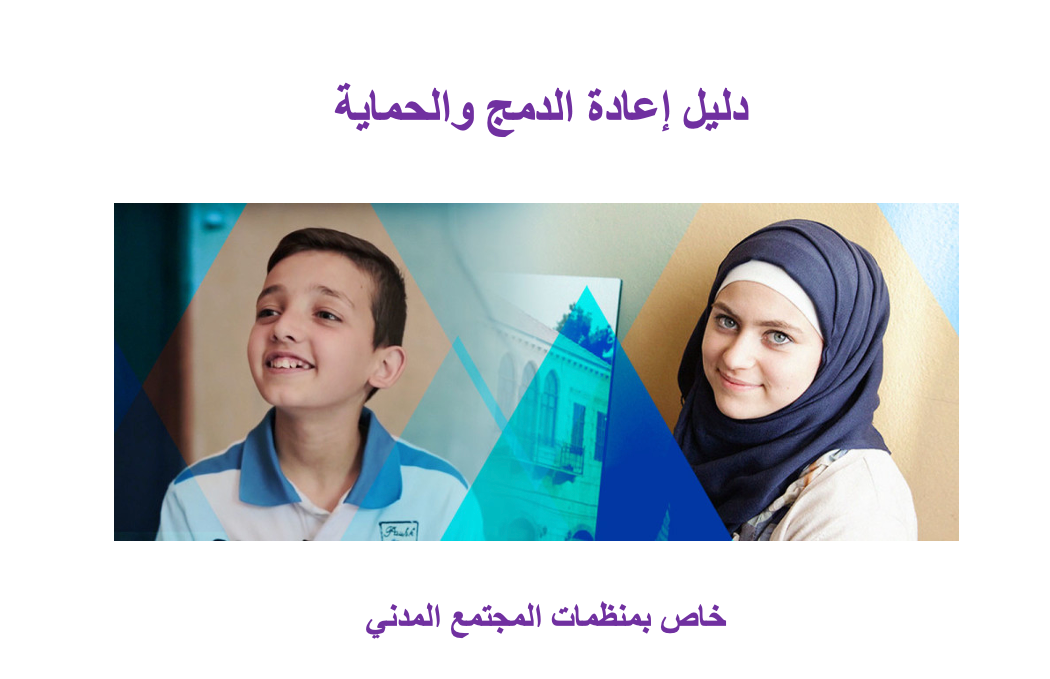The aftermath of conflict leaves scars that go far beyond physical damage. Communities struggle with the challenge of reintegrating those who were affected, especially the vulnerable groups of women, children, and youth. To address this crucial issue, PVE for Peace in collaboration with a number of Syrian local CSOs and international organizations developed the Reintegration and Protection Manual for Local Civil Society Organizations (CSOs). This comprehensive practical guide aims to equip CSOs in Syria with the necessary knowledge and tools to facilitate the reintegration and protection of these marginalized groups and contribute to sustainable peace in post-conflict communities.
Understanding the Purpose
The “Reintegration and Protection Manual for CSOs” is not just a handbook; it’s a roadmap towards sustainable peace. It seeks to address the critical gaps in existing reintegration processes, especially concerning women, children, and youth, who often bear the brunt of conflict’s aftermath. The manual is built on the understanding that true reintegration and protection involve not only rebuilding lives but also dismantling the root causes of violence. By providing comprehensive insights and practical strategies, the manual empowers CSOs to facilitate lasting change.
Cross-Cutting Challenges: Navigating Complexity
One of the manual’s core strengths lies in its ability to address complex challenges head-on. It acknowledges that successful reintegration and protection efforts must take into account multiple dimensions, including risk assessment, conflict sensitivity, rights-based approaches, intersectionality, and mental health support. These principles do not operate in isolation; they intersect and intertwine, forming the foundation for holistic intervention.
Transformative Potential: Beyond Reintegration
The manual underscores the transformative potential of reintegration and protection efforts. By engaging local insight and analysis, CSOs can design programs that disrupt cycles of violence and foster reconciliation. The shift from mere intervention to transformation is a powerful concept—one that can reshape the very fabric of conflict-affected societies. Reintegration becomes a means of protection, while protection initiatives pave the way for reintegration.
Best Practices: Navigating the Project Cycle
The heart of the manual lies in its practical guidance through the project life cycle. Divided into phases—Situation Analysis & Project Design, Implementation, and Monitoring and Evaluation—the manual provides a comprehensive toolkit for CSOs. It aids in identifying risks, safeguarding vulnerable groups, and designing interventions that truly resonate with the needs of women, children, and youth. The case study examples offer real-world inspiration, showcasing success stories that can be emulated.
Flexibility and Adaptability
Recognizing the unique nature of each context, the manual encourages adaptability. It’s not a rigid set of rules but a dynamic resource that CSOs can tailor to suit their specific circumstances. The manual’s flexibility is underpinned by the understanding that reintegration and protection needs vary among different demographics. It’s a guide that acknowledges the diverse challenges and provides strategies accordingly.
Conclusion: Forging a Path to Peace
As Syria navigates the challenging path towards healing and rebuilding, the “Reintegration and Protection Manual for CSOs” offers a beacon of hope. By focusing on the needs of women, children, and youth, and by advocating for transformation, the manual equips local CSOs with the tools they need to make a lasting impact. Each step taken based on this manual is a step closer to forging a sustainable and peaceful future—a future where the scars of conflict are healed, and the seeds of violence are replaced with the roots of lasting harmony.










Leave a reply